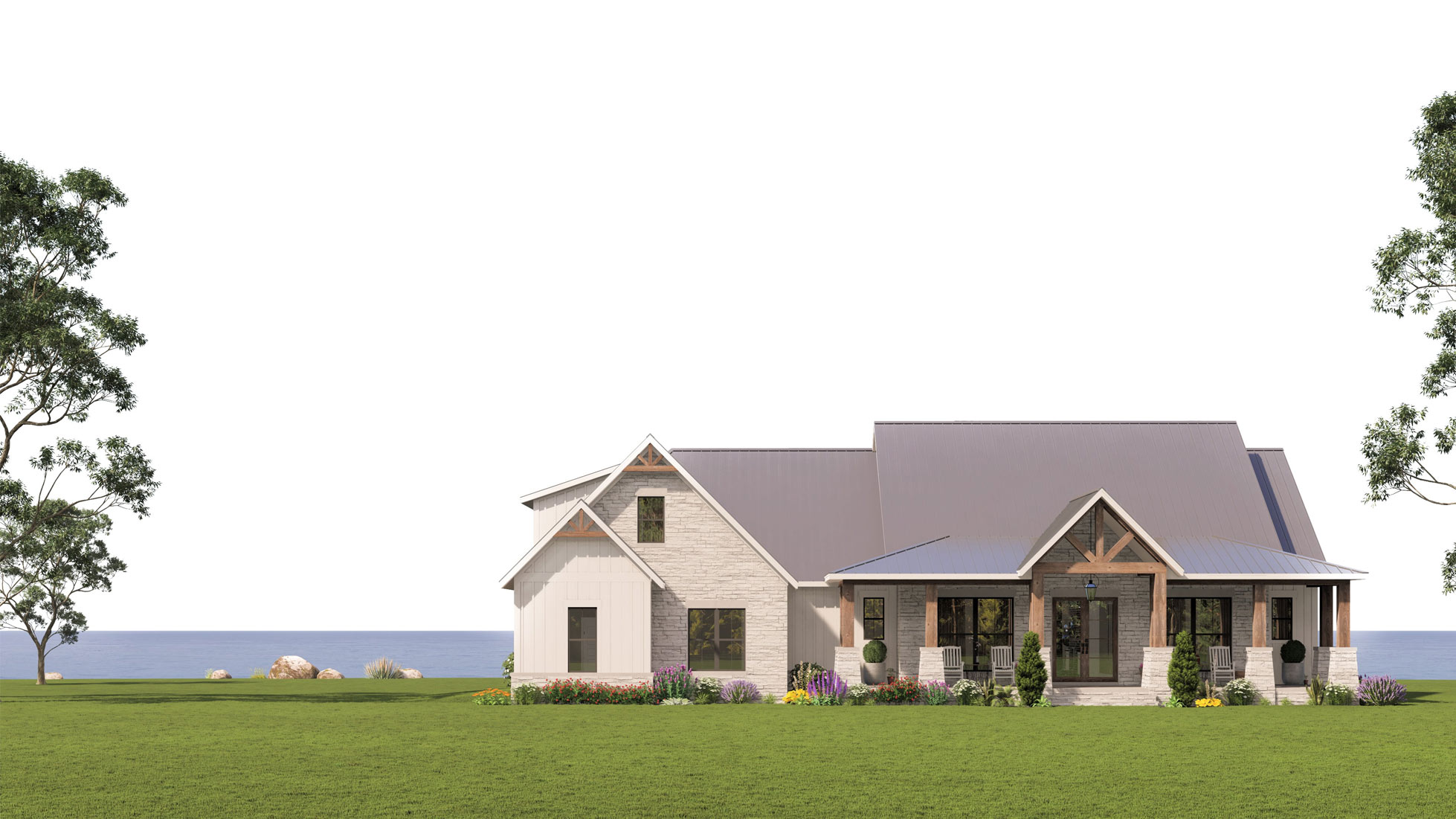history and features of the ever-popular 19th-century architectural style combined with a vision for incorporating modern features and design elements.
A Victorian home generally meant any house built during the reign of Queen Victoria (1837–1901) and coming on the heels of the Industrial Age (1750-1850). This revolutionary period saw fundamental changes in agriculture, transportation, manufacturing, and the cultural structure of societies. Originating in England, this extraordinary period was all-encompassing and revolutionary for introducing a new and different "way of doing things."
While Victorian homes are routinely characterized as Victorian style, Victorian is not a style but more a period in history; however, this era included various subsets of home styles that included:
Often, old Victorian house plans are situated on narrow property lots when the in-town property was at a premium in price and availability, which is undoubtedly still the case today. While you may find single-story plans today, most Victorian homes with luxurious floor plans are two- or three-story-high. Occasionally, a residential elevator is included to make traveling the multiple floors easily accessible.
These utterly charming homes, with their towers, turrets, and elaborate porches, reflect the beauty and aesthetic value of ornamentation and ostentatious detailing. Intricate embellishments, both on the exterior and interior, were, and continue to be, wonderfully fanciful and highly desired as design features on one of the most beloved home styles in America and the world.
The exteriors of these homes are asymmetrical with varying roof lines, feature distinct personalities, and are as unique and individualized as your imagination. Intricate and grand entrances were, and still are, highlighted on the home's exterior and may include elaborate staircases featuring bold and substantial wood trim or gorgeous ironwork. These classic homes typically have wraparound porches, many with attached gazebos, intricate decorations, and, perhaps, a crow's nest or widow's walk overhead. Grand color schemes are often featured on the exterior of Victorian homes. The ubiquitous gingerbread trim we commonly associate with Victorian home plans can still be seen on most homes' surfaces.
Although initially built in answer to mass production and the development of affordable and accessible design materials, Victorian homes have continued to capture homeowners' imagination with their unique, bold, and innovative design features.
Craftsman-style homes, a popular architectural style in the United States, are known for their distinct and recognizable features. Emerging in the late 19th and early 20th century, the Craftsman style was a reaction to the Industrial Revolution. It emphasized handiwork over mass production, focusing on simplicity, durability, and functionality. Here are some key elements that typically define a Craftsman house plan:
A hallmark of Craftsman house plans is their low-pitched gable roofs. The gable is the triangular portion of the wall between the edges of intersecting roof pitches. In Craftsman-style homes, the gable roof typically has a less steep pitch than in other architectural styles. This gives the house a more horizontal emphasis, contributing to its grounded and solid appearance.
Craftsman-style homes are also commonly referred to as “Arts and Crafts” homes. This alternative name comes from the Arts and Crafts movement that originated in Britain in the late 19th century and inspired the Craftsman style. The movement emphasized the value of handcrafted artisanship over mass-produced goods, a philosophy that strongly influenced the design principles of Craftsman homes.
Another term often associated with Craftsman-style homes is “Bungalow.” However, while all bungalows can be considered Craftsman-style homes, not all Craftsman homes are bungalows. A bungalow is typically a small, single-story home with a low-pitched roof and a front porch, while Craftsman homes can be more prominent and may have more than one story.
Craftsman-style homes, renowned for their distinctive architectural features and handcrafted details, are found throughout the United States. However, they are particularly prevalent in areas that experienced significant growth during the early 20th century when the Craftsman style was in vogue.
California is a hotbed for this architectural style, with its roots deepening thanks to architects like Greene and Greene. Pasadena, California, is a city renowned for its Craftsman homes, including the famed Gamble House, and such homes are spread across the state from San Diego to San Francisco. Moving up to the Pacific Northwest, Washington, especially Seattle, has a wealth of Craftsman homes. Historic neighborhoods such as Queen Anne and Capitol Hill are filled with great examples of this style.
In the Midwest, Illinois witnessed a surge in Craftsman-style construction during the early 20th century. Cities like Chicago have many Craftsman homes, particularly in older neighborhoods.
Craftsman homes, characterized by their quality craftsmanship and use of natural materials, come in several distinct types. While all Craftsman homes share some common features, such as low-pitched roofs and built-in furniture, the specific style can vary significantly based on factors such as the size of the home, its layout, and regional influences. Here are some of the most common types of Craftsman house plans:
Remember, these are general categories of Craftsman house plans, and many of these homes will not fit neatly into just one. A single Craftsman house might combine elements from several different types, creating a unique style that’s all its own.

